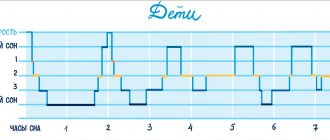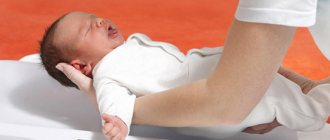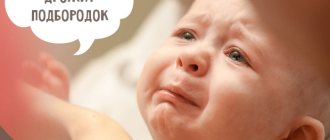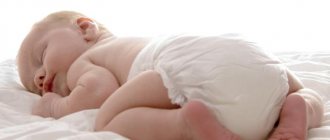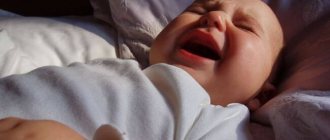What is a pacifier for?
There is still controversy surrounding this subject.
Some people cannot imagine life with a baby without it, others are categorically against its use. Opinions are divided; when trying to convince an opponent that they are right, quarrels often break out between young mothers. At the same time, the pacifier is not an innovation. This invention has a long history. In ancient Egypt, for example, they used a small smooth pebble. Ancient Slavic mothers used tyuryu - bread crumb wrapped in a rag. For the appearance of a more familiar rubber nipple, humanity should be grateful to one young British doctor. The first testers of the invention were his children - noisy twins.
Today this thing is already made from other materials:
- Latex;
- Silicone.
The first nipples are cheaper and softer and require frequent replacement. The second ones are stronger, denser, more durable.
On the left is a latex pacifier, on the right is a silicone pacifier.
The main property of a pacifier is to calm the baby. The fact is that he still has a very strong sucking reflex. Nature has it this way: sucking the mother’s breast both soothes and saturates. It is not always possible to feed a baby just like that, right away, at the first squeak. Then help comes in the form of a pacifier.
Here are the times when you can give your baby a pacifier:
- Scared;
- Cries on the street and breathes in cold air;
- Suffering from colic;
- Sleeps poorly, wakes up frequently;
- Is capricious, for example, when dressing;
- In other cases, when you need to calm the baby.
How to get to sleep during the day
Rituals are your main assistants in the question of how to put your child to sleep during the day or at night. What it is? A certain pattern of actions, after which the baby understands that he will now sleep. At the same time, rituals for daytime sleep and bedtime may differ.
An example of a ritual before a nap : you enter the room with a child in your arms, turn on the so-called “white noise”, go to the window, wish sweet dreams to the birds, trees, close the curtains, swaddle (if the child has not yet learned to roll over on his stomach), put him down in bed and out.
If your baby doesn’t want to fall asleep without you, use the “pick up and put down” method . That is, pick him up in your arms to calm him down and put him in the crib as soon as you calm down (no more than 30 seconds in your arms). If he cries right in your arms, then return him to the crib and pick him up again after some time.
But in fact, if you choose a favorable moment at the end of the waking time, when the baby really wants to sleep, most likely he will very soon fall asleep sweetly in his crib.
Why do babies love pacifiers?
All healthy children have a need to suck the mother's breast - this is how an innate reflex manifests itself. Without it, the newborn would be doomed to death. Sucking movements reduce tension in the spine received after childbirth. In the process, a signal is delivered to the baby’s brain that everything is fine, and he quickly calms down.
By the age of six months, the sucking reflex gradually weakens, and by the age of 3-4 years it usually disappears completely. Most children, long before this age, cease to need both the nipple and the mother's breast.
This is interesting ! Eternally busy parents have existed at all times, so the pacifier was used as a breast surrogate among many peoples. The Egyptians used smooth pebbles for this purpose, the Chinese made leather teats from the udder of a cow, and in Russia they chewed bread, placed it in a bag and gave it to the baby.
At what age should a child be weaned off a pacifier?
How and when is it time to wean your child off the pacifier? The natural instinct begins to subside when the baby is six months old. Unfortunately, at this age, some children stop suckling their mother's breast, especially if complementary foods appear in the diet. The desire to pamper with a pacifier usually occurs in children who need psychological support more than active children, for whom the pacifier simply prevents them from getting to know the world. When the desire to study the environment is formed at a psychological level, the pacifier will become boring. At this point it can be replaced with other things. For example, when a baby starts teething, he is given a teether. Carried away by a new activity, the little researcher will forget about his former “girlfriend.” Some children even go to bed holding a silicone ring in their hand.
Psychologists believe that the most fertile periods for weaning a baby from a pacifier - of course, taking into account the physiological and psychological characteristics of development - are the following periods:
- from 3 months to a year;
- from one and a half to two years.
However, psychologists do not name a more precise time when the baby should give up the pacifier.
Pediatricians recommend starting the weaning process at one and a half years, but still warn moms and dads not to be too zealous. So what if friends and acquaintances say that they left their children without a pacifier for almost six months! Who cares about neighbors who say that a pacifier is harmful, and it’s a shame to walk around with a “duda”. The main thing is the readiness of the child himself. If he cannot part with her yet, his parents will not be able to convince the stubborn little one. We'll have to wait for this desire to “ripen.” And already start taking action.
Advantages
Should newborns be given water when breastfeeding?
The pacifier has many positive qualities, otherwise it would not have been used for such a long time.
Moms love her for this:
- Satisfying the infant's sucking reflex. Until about six months it is especially strong, this is the main way to calm down.
- Frees mom's hands. You can, of course, get by with just your breasts. But then you will have to be literally attached to the baby most of the time. This is quite difficult.
- Normalizes sleep. In infants, pacifier sucking causes increased production of cholecystokinin. This hormone is responsible for the calmness of the little person and, therefore, better quality sleep.
- Improves digestion. The same cholecystokinin helps digest milk fats and proteins.
- Speech development. Sucking develops facial muscles. When the time comes to master speech, a developed articulatory apparatus will help you gain this skill faster.
Flaws
Of course, the pacifier has a number of disadvantages, otherwise there would not be so much controversy about its harms and benefits.
The disadvantages of using are:
- Possible interference with breastfeeding. It happens that the baby refuses the breast in favor of the pacifier. This means that he gains weight worse and develops more slowly.
- Abuse. Sometimes a child's crying is caused by a specific reason, for example, a rolled-up corner of a diaper rubbing the skin. It is easier for a parent to give a pacifier than to figure out why the child is crying.
- Formation of malocclusion. This happens when sucking a pacifier for more than 2 years on average, as well as when using non-orthodontic pacifiers.
- Difficult weaning. For most children, it then goes away with hysterics, as a strong habit is developed.
- The likelihood of poisoning and helminthiasis is higher. The pacifier is in the mouth not all the time the child is awake. The more he moves, the more often the pacifier falls on the floor and dust settles on it. All this ends up in the child's mouth.
- Entry of pacifier material into the stomach and respiratory tract. When a baby grows teeth, he begins to gnaw on everything. At the same time, he can bite off a piece and swallow it. There are chances that the child will either swallow it or choke on it.
Attention! There is no clear rule about whether you can give a pacifier to a newborn. Each mother weighs all the pros and cons and makes her own choice.
How long does it take to wean your baby off sucking pacifiers?
Opinions differ regarding age. Even in the last century, no one in the villages was surprised when they saw a 4-5 year old child with a pacifier in his mouth.
It was convenient for adults because children did not interfere with their work. In some countries, prolonged pacifier sucking is still practiced. Doctors have different opinions on how long to stop sleeping with a pacifier.
Note! In Russia, it is customary to start weaning at 1.5-2 years.
Children go to kindergarten at 3 years old, so parents instill in them more independence. Often already at this age he can dress himself, and sucking a pacifier becomes harmful.
Psychologists are sure that at two years old a pacifier is not needed. This is due to the fact that his intellectual and speech development may lag behind.
There is a possibility of malocclusion. If a child requires a pacifier after 2 years of age, he needs social support and increased attention from adults. There needs to be more leniency towards these children.
Safety regulations
Is it necessary to supplement the baby with water while breastfeeding?
It is important to choose the right baby pacifier and care for it:
- Be sure to sterilize. This is done in the same way as with bottles: in the microwave using a special device or a special bag, or at least with boiling water. An item that has fallen on the floor should not be given to a child.
- It is better to give preference to silicone. It's harder to bite through. It is also more resistant to high temperatures during sterilization.
- Use protective cases. When you need to take the pacifier with you on the road, for example, carry it in a special (also sterilized) box.
- Use leashes. This is a kind of tape with a clip. One edge of it is attached to the pacifier arm, and the clip is attached to the baby’s clothing. It prevents objects from falling on the floor, protecting them from contamination. In this case, the tape should not be long so that the child cannot wrap it around his neck.
- Replace pacifiers on time. Latex “lives” for no more than a month, silicone - three. Allergies may occur to these materials. If you suspect it, you should immediately stop using the pacifier, give the child an antihistamine and consult a doctor.
- After a year or a year and a half, try to wean off. More precisely, you need to look at the child’s readiness. Parents should be prepared for the fact that about three days will be difficult. Afterwards it will become easier. By this moment, there must be at least one more calming mechanism in order to replace the usual sucking.
We recommend reading: Review of the book “Secrets of a Sleepy Mom.”
Unlearning process
How to wean your baby from sleeping with a pacifier
A story familiar to many parents: the child is ready to give up the pacifier during the day, but cannot fall asleep without it. If you have decided to wean your baby off the pacifier for good, the following tips may help you.
1. If the child is under 1 year old, change the daily routine slightly so that feeding is immediately followed by sleep. Let your baby fall asleep at the breast or with a bottle. At this time, you can turn on a gentle melody or read a fairy tale. When breastfeeding, offer your baby a breast instead of a pacifier. At first, you may have to sleep next to him, since he may wake up, and you will need to calm him down without the usual “comforter”.
2. Children from one to two years old can be given rubber teething rings in their crib.
3. You can already talk to children over three years old about the dangers of pacifiers. Try to agree to sleep without your favorite “toy”.
What if you don't give your baby a pacifier?
If you don’t want to give your baby a pacifier, then breastfeeding will help.
A situation may arise when, immediately after feeding, the baby again demands to be fed. It is worth giving your baby the breast, as children often fall asleep during the process of simple quiet sucking.
If the baby starts crying on the street, and it is during this period that the mother does not have the opportunity to breastfeed the baby, it is worth heading home.
There is an opinion that up to two months a child can stay at home most of the time; he does not yet need daily walks. Over this age, the street and fresh air, on the contrary, will help the baby sleep better even without a pacifier.
You can also avoid using pacifiers after taking a bath. If the baby needs to be lubricated, rubbed or dressed, and he cries, then you should first breastfeed the baby, wrapping him in a soft towel. Then carry out all hygiene procedures and dress the baby.
Newborn babies are often capricious when changing clothes. The woman will dress the baby faster each time, so as not to once again provoke the baby’s tears. You can also dress your baby while standing, with the help of loved ones. After all, such behavior of a child usually manifests itself when changing clothes while lying down.
Some mothers do not want to breastfeed their children in public places because of embarrassment and give the baby a pacifier. But it is much better to use special nursing underwear and give the baby the breast upon request.
In cases where a child’s crying is caused by anxiety or fear, it is enough to hug him, feel sorry for him and calm him down. If warm hugs and mother's care do not help, then you can breastfeed.
Sometimes children develop the habit of thumb sucking. The baby is more accustomed to this; this is his behavior even in the womb. If you limit a child in this, he will not understand why parents prevent him from doing what he is used to. As a rule, by the age of one year this behavior goes away on its own. Or the habit will go away as soon as the baby has all its teeth. If his hand stays in his mouth for a very long time, perhaps the child is already hungry and it’s time to feed him.
Ways to wean yourself off the pacifier
"Soska wants to go for a walk"
During the day, you need to remove the pacifier from the baby's field of vision. When he looks for her and persistently asks, you should explain that the dummy has gone for a walk. She likes to walk during the day and returns only in the evening. At first, the child will only fall asleep with the pacifier, and then he will be able to refuse it completely. If the baby is under 1 year old and does not accept such a story, simply remove the pacifier and try to distract his attention as soon as the whims begin. The main thing is consistency. If you are determined to wean your child off the pacifier, do not contradict your words and do not give the pacifier while he is awake.
Buying another pacifier
Grandmother’s method, which has been used for more than one generation, is to cut the pacifier so that it is inconvenient to suck on. But it has a big disadvantage: the baby can get hurt with such a nipple. Nowadays, pharmacies and children's stores offer a huge variety of pacifiers; they differ in size, shape and even taste. If your baby has certain preferences, buy him a completely different pacifier that he definitely won't like. When the baby is naughty, do not give back his favorite pacifier, but distract his attention.
“Let’s give a pacifier to Lala”
This method is suitable for 2- and 3-year-old children, with whom you can already reach an agreement. This is especially true if a little brother or sister has appeared in the family. In this case, it is worth offering to give the pacifier to someone who needs it more. You can also send a parcel to a bunny or squirrel with your child, and write a letter together for the “recipient”. In play, it is easier for a child to accept rejection of his favorite “toy.”
Loss of pacifier
This method is great if the baby likes to play with the pacifier and may spit it out or throw it away. It can be shown that after such a throw the dummy was actively searched for, but was never found. If your child already knows that a new pacifier can be bought in a store, try to avoid counters where he can see it.
Pleasant exchange
The story of the tooth fairy will help here (you can come up with any character that your child likes). Tell your child that he has become big and his favorite hero can take his pacifier and bring him a gift in honor of this event. Offer to put the pacifier under the pillow and give her a toy in the morning.
Using the Vestibular Plate
Such plates, like many nipples, are made of silicone, but have a different shape. The products are intended not only for weaning off the pacifier, but also to prevent the development of malocclusion.
When can you give a pacifier?
The chance of negative consequences can be reduced. Of course, this will not help avoid difficult weaning, but it is possible to prevent breast refusal. To do this, you need to know when to give a pacifier to your baby. There are several criteria by which to determine the degree of readiness of the baby.
Type of feeding
First of all, you should decide on the type of feeding. Most mothers feed their children themselves, but some prefer to raise their child on artificial feeding from the first days. In the second case, a pacifier can be given from the first days. In the first case, it is better to wait and go through the stage of establishing lactation.
Stabilization of the feeding regime
If a mother prefers breastfeeding, then it is also important to track how her child eats. There are children who are lazy to suckle milk, eat little and reluctantly, and do not gain weight well. If you immediately introduce him to a pacifier, he will almost certainly refuse the breast. A newborn can be given a pacifier when he eats confidently and well, and his weight is at least at the average value for his age.
In any case, you should not give a pacifier before feeding, otherwise the baby will eat worse afterward. Its use is allowed after meals.
Baby eats
How to put to sleep without a breast, pacifier or motion sickness
Breastfeeding (like the pacifier, rocking, sleeping in a stroller while moving) are sleep associations . Somnologists call them negative, because if they are absent, the child simply cannot fall asleep on his own.
The easiest way to get away from breastfeeding and frequent night feedings is to separate food and sleep . To do this, you need to move all meals to the middle of your waking hours (it is important to follow the feeding schedule).
As for other bad habits (for example, a pacifier, which can fall out during sleep and cause the child to wake up), it must be gradually taken away until the moment of falling asleep .
The same applies to motion sickness. You can rock the baby a little until he relaxes , but then when he is ready to fall asleep, the movements should stop. How to put a child to sleep without motion sickness at all? Reduce your range of motion with each lay down. And in a week or two you will forget about motion sickness.
And finally, some useful tips:
- The child should fall asleep and wake up in the same place.
- If there are negative associations with sleep, they must be removed gradually, day after day.
- If a child wakes up after 30 minutes during the day, this indicates that he has “overstayed” lately, that is, he has not slept for too long.
- If a child wakes up 40 minutes after the start of his daytime nap, this indicates that he “didn’t get enough sleep,” that is, he wasn’t tired enough while he was awake.
- Add relaxing music to your ritual. The child will understand that it is time to sleep as soon as he hears a familiar melody.
Read also: 3 habits that affect a child’s health.
Photo: Pixabay
How to choose a pacifier?
When buying necessary things for their baby, mothers often ask themselves the question: which pacifier to choose for a newborn when breastfeeding? First of all, you need to take into account that long-term use of a breast substitute can worsen the bite.
We recommend reading: Night terrors in children: how do they manifest themselves, reasons, how to overcome?
It is quite difficult to choose the right pacifier, because there are quite a lot of them on store shelves, they vary in price, shape and color. Children prefer latex ones, as they are quite soft. But such types last very little, so very soon the pacifier will have to be replaced.
Silicone nipples are considered more durable. But they are again harsher and are not suitable for newborn children.
If the pacifier is damaged (the baby has bitten it), then throw it away; there is no need to give it to the child again, it can damage the palate or gums.
When a mother thinks in advance about her child’s health and proper bite, she buys an orthodontic pacifier. Many companies produce such items. But a child cannot always take such a pacifier.
The pacifier and breastfeeding
The opinion of most experts is unanimous: a healthy breastfed baby does not need a pacifier, and its long-term use is harmful. It should be used as a last resort: when it is necessary to leave the baby in the care of relatives, to go to a public place, etc. There are several reasons for this:
- Sucking a pacifier from birth reduces the consumption of mother's milk, which can have a negative effect on the baby's weight gain and lead to weakness and deficiency of various substances.
- Milk in the breast should flow in response to the request shown during sucking. If there is no demand, there will be no milk.
- Breast sucking and pacifier sucking are technically different actions. With a large amount of liquid, the baby will not have difficulty sucking; if the volume of milk decreases, he may refuse to breastfeed.
Can a newborn be given a pacifier at night?
Newborn babies have a highly developed sucking reflex. The more pronounced it is, the more difficult it is to calm the baby without a pacifier. Such a child will put everything in his mouth - fingers, a blanket, a diaper. In this case, it is better to give him a pacifier. Having satisfied the need for sucking, the baby will calmly fall asleep.
If your baby sleeps better with a pacifier than without it, you shouldn’t deny him. But you should not abuse this method of calming. It will be better if the pacifier is used only to relax the baby before bed. To
Does a baby need a pacifier?
Nothing can completely replace the mother's breast for a baby. This is an indisputable fact. But in some situations that arise for various reasons, you cannot do without a pacifier or pacifier. But, let's figure it out: what is the difference between a pacifier and a pacifier?
A pacifier is a product that is used to feed a baby along with a bottle. The nipple for feeding a baby must have a hole through which milk enters the baby's mouth.
It is worth noting that there are cases when a pacifier is simply necessary for babies. We are talking about artificial children. If the mother does not have milk or the child has congenital lactose intolerance, the baby is transferred to artificial feeding. Here you can’t do without a pacifier.
A pacifier is also a pacifier, but its purpose is not related to the baby’s nutrition. There is no hole in the pacifier because this item is intended only for sucking to soothe the baby.
The sucking reflex is in the mind of every newborn; it is inherent in nature. Even in the womb, the child makes sucking movements, and when he comes into the big world, the instinct remains. Parents have probably noticed that when the baby sleeps, he makes involuntary movements with his lips. A awake baby sucks a finger or fist. If the baby is upset or nervous, he involuntarily pulls something into his mouth. This is not at all a bad habit, as some mothers and fathers believe. Just natural instinct.
And in this case it is easier to give a pacifier. Easier for whom? To parents, of course! A pacifier will help protect parents from unnecessary screaming and calm the baby.
A pacifier will be a tremendous psychological support for a restless baby, as well as for his tired mother.
However, according to pediatricians, a pacifier should be given to a toddler only when he needs it. If a child can do without a pacifier and does not try to keep his finger in his mouth all day, then there is no need to introduce him to a pacifier.
Opponents of the pacifier believe that if the baby constantly “plays around” with it, then he stops actively sucking on the mother’s breast and, as a result, remains hungry, begins to lose weight, and does not receive enough nutrients necessary for the body that are in mother’s milk. It's a delusion. A pacifier is a tool for calming a baby and does not affect appetite at all.
What are the consequences if a baby is left with a pacifier at night?
The most common problem for babies who cannot sleep without a pacifier is that the pacifier falls out of their mouth during deep sleep. As soon as the child discovers it is missing, he will scream and demand it back. This situation can repeat several times during the night. As a result, neither the baby nor the parents will get enough sleep.
In addition to sleep disturbance, sucking a pacifier at night can lead to the following negative consequences:
- Formation of malocclusion. Possibly due to regular, prolonged sucking. A pacifier with an anatomical shape will help reduce the risk.
- Problems with the gastrointestinal tract. Sucking promotes not only calming, but also the release of saliva and gastric juice. Excessive amounts of these fluids during sleep are harmful.
- Problems with breastfeeding . Frequent sucking interferes with the correct formation of nipple latch and can lead to the baby refusing the breast. It is especially not advisable to abuse the pacifier in the first months of establishing breastfeeding.
- Strangulation. The child cannot choke on the pacifier thanks to the protective disc. The danger arises after teething. The baby is able to chew the pacifier and then small pieces can get into the respiratory tract.
- Addiction. The more often your child sucks on a pacifier, the more difficult it will be to give it up.
We recommend reading: Calming cartoons before bed: 10 options
When to give a newborn a pacifier?
If you have offered your child several pacifiers of different colors and shapes, but have been refused every time, then you should not specifically accustom your baby to them. If a child needs to suck a pacifier, then there will be no need to accustom him: he will take it into his mouth himself.
You can give a newborn a pacifier in the first weeks of life, when he is already accustomed to sucking on his mother's breast. You should start weaning your baby closer to the age of one year, or better yet, as early as possible, before his bite is formed.
Tips for using a pacifier:
- Use a pacifier as a way to soothe your child as little as possible and do not give it for a long time so as not to cause addiction;
- Choose the right size depending on the age and individual characteristics of the baby;
- Keep it clean, do not forget to sterilize it, and under no circumstances give your child a pacifier that has fallen on the floor;
- Do not forget to regularly replace it with a new one, especially if the old one has any mechanical damage.
We hope this article helped you not only decide whether you will buy a pacifier for your child, but also understand its choice and use. And the online store “Island of Childhood” will help you in purchasing a high-quality pacifier and many other products for children.
When is it time to give up the pacifier?
If your baby strongly associates the pacifier with sleep, and he calls you at night to give it to him again, it’s time to give up this habit.
Many pediatricians agree that the most appropriate age for this is 1-1.5 years. Unfortunately, there are no pleasant, painless ways to give up the pacifier. But keep in mind that giving up the usual pacifier is much easier for children than parents usually think. No matter how strong the habit is, giving it up will take no more than 3 days.
Refusal from the pacifier - what should you do?
- Tell your baby it's time to give up the pacifier
- Give your child a few days to get used to this idea and choose a day to start
- If the baby is very worried, calm him down, stroke him, pat him on the back.
- Be prepared for some tough nights and days.
- Do everything possible to strengthen your child’s attachment to his favorite toy (link to article about pets). Say: “Now is not the time for a pacifier, but Teddy Bear is here, he can hug you.” This both distracts him from the pacifier and gives him a safe replacement. Better yet, give him a new favorite toy. This novelty may distract him even more. You can even take your child to the store so he can choose a new friend for himself.
- If your child is older, you can read him a book about giving up pacifiers (link to book)
- Some pediatricians recommend cutting or piercing the tip of the pacifier, then the child will no longer like it.
- Whatever you do, if you take away the pacifier once, don't buy a new one after an hour of crying!
If you're not ready to give up your pacifier just yet.
Many parents do not want to wean their child off the pacifier, preferring to wait to see if he will give it up on his own. If you are not ready yet, we would recommend
- do not give a pacifier during daytime naps and preparation for bedtime
- Don't let your baby walk around with a pacifier all day
Some babies who lose their pacifier begin to suck their thumb. But this is the exception rather than the rule.
Thus, the pacifier itself is not a problem. But most often it is used as an aid when falling asleep. If your child wakes up at night, and in order to fall asleep, he needs a pacifier, the relationship is obvious - it is the pacifier that is the cause of the baby’s sleep disturbances.
The child falls asleep with a pacifier. "Pros and cons"
For parents, the pacifier often becomes a real lifesaver. However, its use is often walking a fine line between harm and benefit. Many people wonder whether the pacifier helps the baby sleep all night, or is it the one that provokes frequent awakenings and fragmented sleep? Mothers of older babies begin to worry about the question of how to wean their child off the pacifier, and until what age is it optimal to use it.
A good way to understand everything is to review in detail the pros and cons of using a pacifier, and understand what conditions are optimal for its use.
Arguments for"
- Satisfies the sucking reflex
Children in the first 6 months of life feel the need to satisfy the sucking reflex; this calms and distracts them. However, frequent and prolonged feeding can lead to overeating, as well as the inability to establish a feeding schedule. In this case, a pacifier will help you out.
- Sleep assistant
The child falls asleep with a pacifier, and for him this is a simple and effective way to calm down and fall asleep on his own, without the help of his mother. This item is safe, can be in the baby’s crib from the first days of life and serve as a good sleep association.
If the child sleeps restlessly, loses the pacifier, often wakes up at night and you have to constantly be on guard and insert the pacifier back - teach the baby to do this on his own, or refuse such an assistant, since the pacifier has turned from a good association into a cause of poor sleep.
- Calms and distracts from minor pain and discomfort
Having received a pacifier, the baby completely focuses on sucking, and procedures such as taking blood for a test, vaccination, or other medical interventions that cause short-term discomfort can go unnoticed for the baby.
It makes sense to offer a pacifier as a reassurance for causeless “purple” crying, which is a consequence of the immaturity of the nervous system in babies under 16 weeks.
A pacifier can help calm colic if parents correctly understand the definition of colic - this is a restless, nervous condition of the baby, often leading to crying. Attacks last more than 3 hours a day, more than 3 times a week and more than 3 weeks and are not associated with increased gas formation.
If you see that the baby is bothered by gases, you should not offer a pacifier, as the air swallowed during sucking can aggravate the situation.
- Reduces the risk of Sudden Infant Death Syndrome (SIDS)
Using a pacifier when falling asleep significantly reduces the risk of SIDS and has a positive effect on heart function. Studies have not found a decrease in the positive effect of the pacifier after it falls out of the mouth of a sleeping baby, so in such cases experts do not recommend returning the pacifier back.
- Using a pacifier develops the sucking reflex and contributes to the speedy recovery of premature babies.
Doctors' advice
Experts have varying opinions regarding the use of pacifiers.
- Pediatricians believe that sucking a pacifier before the age of six months is justified by a strong sucking reflex. The child’s need for it will go away on its own and there is no need to worry. It is important to avoid extremes and not push the baby's pacifier when he can be distracted in another way. Then there will be no problems with weaning.
- Psychologists explain babies' love for pacifiers by insufficient physical contact with their mother. If the need for closeness with the mother is satisfied, an artificial substitute will not be needed. A baby's stable psyche is formed by breastfeeding on demand and skin-to-skin contact.
- Breastfeeding experts believe that a pacifier interferes with natural feeding. Attachments to the breast are replaced by sucking on the nipple, because of this the amount of milk decreases, and the child’s grip on the mother’s nipple deteriorates. As a result, the child does not gain weight well, and additional formula feeding becomes necessary. The best substitute for a pacifier is mother's breast.
- Dentists are against sucking pacifiers after teething. A pacifier can ruin a child's bite. During the day, to calm down, it is better to give something to chew on, as the sucking reflex gives way to itching in the gums. At night it is better to do without a pacifier and its substitutes.
